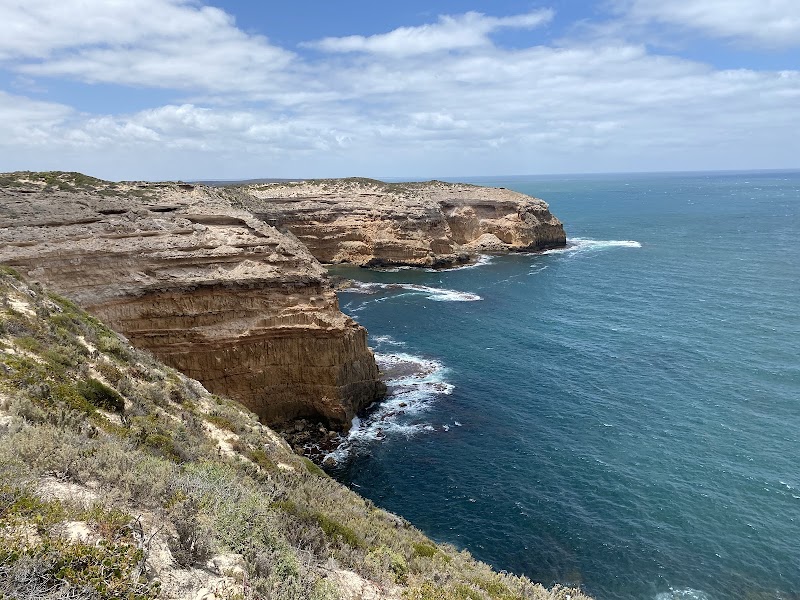
Savor the Adventure: Fleurieu Vine and Wine Festival at Mount Compass
Experience the vibrant Fleurieu Vine and Wine Festival in Mount Compass, South Australia, where sprawling vineyards meet engaging tastings and rural trails. This festival balances immersive exploration with practical enjoyment, ideal for adventurers eager to taste and navigate the heart of the Fleurieu Peninsula wine region.
Wear Appropriate Footwear
Choose sturdy walking shoes with good grip to navigate both paved and gravel vineyard paths comfortably.
Stay Hydrated
Carry a refillable water bottle to balance wine tastings and keep hydrated, especially in warm weather.
Plan Your Route with a Map
Use the festival map to efficiently navigate between venues and avoid backtracking along dispersed vineyard stops.
Arrive Early
Start the festival early to enjoy cooler temperatures and quieter tasting sessions before the midday crowds arrive.
Savor the Adventure: Fleurieu Vine and Wine Festival at Mount Compass
South Australia's Fleurieu Peninsula transforms into a lively stage each year for the Fleurieu Vine and Wine Festival, held in the small town of Mount Compass. This festival merges exploration with indulgence, showcasing the region’s vibrant wine culture framed by sprawling vineyards and rugged natural backdrops. As you move through tasting stations, farm stalls, and live demonstrations, the festival invites you to engage with both the land and its products in a distinctly tactile way.
Mount Compass sits in a rural corridor where the earth seems to breathe with the pulse of vineyards pushing their tendrils under the sun and soil. The festival spans a walkable course, linking cellar doors and wineries dispersed around the town’s outskirts. Distances between venues vary — expect a relaxed 3 to 5-kilometer loop on mostly flat, well-maintained rural roads and some dirt paths softened by the local climate.
The terrain asks for practical footwear: sturdy walking shoes or hiking sandals with grip, as some gravel can be loose. In spring or early autumn, morning fogs hang like breath over the vines, then lift to warm sunshine, urging you forward.
Traversing this landscape, the air carries whispers of eucalyptus and crushed grape skins. The vineyards exert a gentle insistence, coaxing visitors to pause, swirl, and savor the fruit of their labor. Each sip is paired with local food stalls that complement the wine — olives, fresh bread, cheeses, and cured meats — elevating the journey into a full sensory expedition.
Pragmatic planning makes the festival rewarding: arrive early to avoid heat during warmer months, and carry water to counterbalance wine’s dehydrating pull. The festival’s layout encourages a slow pace; this is an experience to engage with, not accelerate through. Signage is clear, but a festival map—available online or on arrival—helps you navigate between less obvious venues.
For photographers and nature lovers, early morning or late afternoon light paints the rolling vineyards with sharp shadows and golden hues. Wild kangaroos venture near the edges of the vineyards, particularly at dawn and dusk, making for unexpected wildlife encounters.
Mount Compass also reflects a cultural depth with its connections to the Ngarrindjeri people, custodians of the land. Signs and guided talks highlight this history, giving context to the landscape beyond aesthetics.
Whether you come for the wine, the walk, or the mingling of both, the Fleurieu Vine and Wine Festival challenges you to engage — not merely consume. Nature here is firmly poised, not conquered, inviting visitors into a dialogue of respect and appreciation.
Nearby Trips
All Adventures
Boat Charters
Water Activities
Adventures near Mount Compass, South Australia
Discover the unique and memorable adventures that make Mount Compass, South Australia special.
Frequently Asked Questions
How far apart are the festival venues?
Venues are generally 300 to 800 meters apart, forming a loop around Mount Compass town and nearby vineyards. Walking between stops typically takes 5 to 15 minutes, allowing easy flow through the festival.
Are there shuttle options for those who prefer not to walk?
Some wineries and festival organizers provide shuttle services or share ride details, especially for people with mobility concerns. Checking the festival’s website before attending ensures current options.
What kinds of wines are featured at the festival?
The festival highlights local varieties like Shiraz, Cabernet Sauvignon, Riesling, and Chardonnay, reflecting the Fleurieu Peninsula’s diverse microclimates and soils.
Is the festival family-friendly?
While the festival centers on wine tastings for adults, many venues and stalls offer local food and artisan products. Families are welcome, though it’s best to plan accordingly.
Are pets allowed at the festival?
Due to crowds and food/wine sensitivities, pets are generally discouraged, except for service animals. Check individual venues for pet policies.
What local wildlife might I see during the festival?
Kangaroos and native birds such as kookaburras and rosellas frequent vineyard edges, especially early morning or late afternoon. It’s an opportunity to observe wildlife framed by vineyard vistas.
Recommended Gear
Comfortable Walking Shoes
Protect your feet and provide grip on gravel and paved winery paths.
Water Bottle
Hydration is critical when tasting wines and spending extended time outdoors.
Light Jacket or Layer
For cooler mornings and evenings, a layer helps maintain comfort.
Sun Protection (hat and sunscreen)
Protect yourself from sun exposure during mid-day tastings and walks.
Local Insights
Hidden Gems
- "The lesser-known 'Echo Point' near Mount Compass offers panoramic views over vineyard rows and rolling hills."
- "A small native bushwalk just north of town reveals wild orchids and birdlife less visited during the festival."
Wildlife
- "Grey kangaroos graze in vineyard margins."
- "Bell miners and crimson rosellas enliven the woodland edges."
History
"Mount Compass land is part of the Ngarrindjeri people's traditional country, with cultural heritage tours offering insights into their deep relationship with the local environment and stewardship practices."
